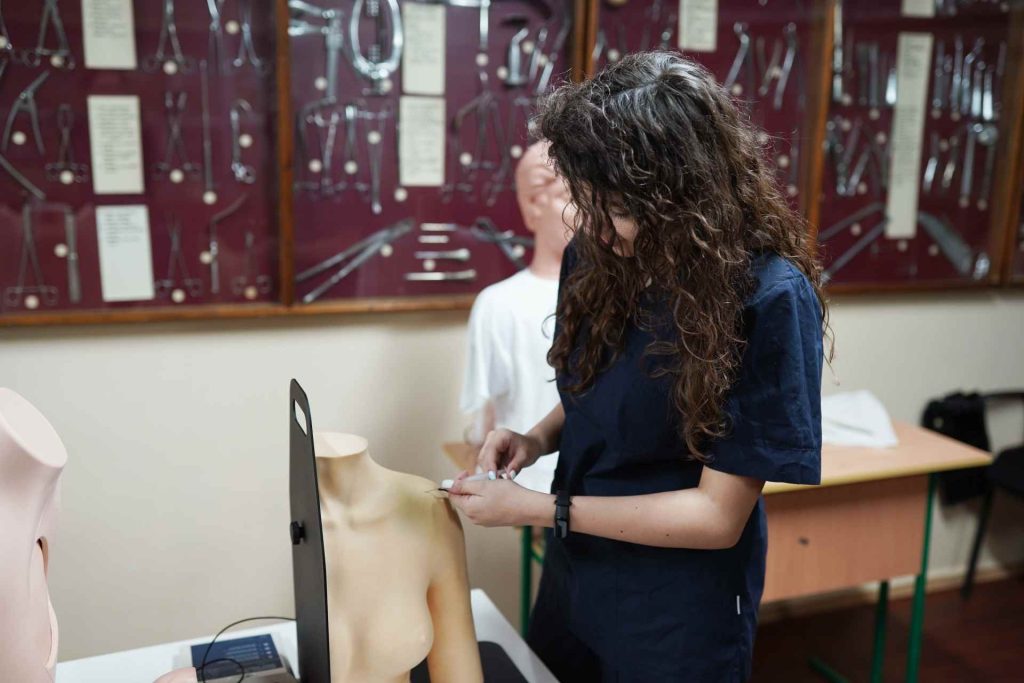Universities are thinking of "scaling back" simulated practice learning for nursing students despite its success, due to a lack of funding and resources available, a new report has warned.
Students, practice supervisors and others have overwhelmingly praised the positive impact that simulated practice learning has had on nurse education.
“This has helped us to develop a clear, holistic understanding of simulated practice learning within nursing programmes"
Paula Jane Holt
But a new report published this week by the Nursing and Midwifery Council (NMC) has shown that a lack of funding and resources is a major barrier to its rollout across many education institutions.
The report summarised the experience of 18 universities in England and one in Scotland which have delivered up to 600 of the 2,300 hours of practice learning through simulation within pre-registration nursing programmes.
It comes as the regulator last year approved changes to its pre-registration education standards, which included increasing the number of allowed simulated practice hours from 300 to 600.
The NMC said that the findings and recommendations from the new report would support its ongoing implementation of education standards and contribute to its review of practice learning.
The review found that, across the 19 universities, implementation of simulated practice learning was “wide-ranging”.
Some universities had existing infrastructure, resources and dedicated academic and technical teams, while others were just beginning to roll out simulated practice learning, with minimal resources and no dedicated staff.
The review also found that simulated scenarios had become “increasingly complex and realistic”.
Students now undertake simulated learning in virtual care environments with lifelike mannequins, or through roleplay with peers or trained actors, it said.
Meanwhile, students “overwhelmingly” valued simulated practice learning for providing a “safe, supportive environment” in which to practise and reflect.
Across all fields of nursing, particularly mental health, children’s and learning disabilities, students valued simulated practice learning that enabled them to practise things they had not experienced on placement.
However, the review also highlighted that lack of funding and resources was inhibiting the “long-term success of simulated practice learning”.
“It is clear from reports that resourcing [simulated practice learning] provision is a key threat to its sustainability, continued growth and development,” it said.
Universities consistently reported that they needed to cover the costs of infrastructure, equipment, consumables, support and supervision.
The report warned that this came in the context of “sector-wide concern about financial sustainability”, with additional concerns about the reduction in student nurse numbers across universities.
It comes as latest data from the Universities and Colleges Admissions Service showed that nursing student numbers in the UK have fallen by more than a fifth in three years.
The NMC found that some universities in England had “benefitted from significant grants” from the former Health Education England and the Office for Students to expand simulated practice learning.
However, this funding was largely a “one off” sum and “not continued funding to sustain activity”, the review noted.
Some universities stated their intention to “scale back” or reduce the number of simulated practice learning hours they offer within nursing curricula going forward.
The report said this was mostly driven by financial sustainability and staff resourcing, but also the drop in student numbers.
Although the NMC has no regulatory remit around funding of nurse education, it said the report would be shared with system partners for their consideration.
In addition, it said it would be beneficial if the report was considered by approved education institutions (AEIs) across the devolved nations as “understanding of simulated practice learning activity from these nations is limited in this report”.
NMC senior nursing adviser, Professor Paula Jane Holt, said: “Simulated practice learning allows students to practise, repeat and reflect on their skills, preparing them to join our register and deliver the high standards of care everyone has the right to receive.
“We’re grateful to all 19 AEIs involved in this evaluation for their rich insight, including the valuable feedback from students, educators, practice learning partners and people who use services and their carers.
“This has helped us to develop a clear, holistic understanding of simulated practice learning within nursing programmes at these AEIs which we will now use to inform the implementation of our education standards, and our ongoing practice learning review.”
Related articles
- Major review ‘supports use’ of simulated nurse learning
- How nurse education is embracing simulated practice learning
- ‘Life-like’ nurse simulation training boosting student engagement
- NMC to launch review into practice learning requirements
- Scotland’s outgoing CNO to lead NMC practice learning review group


Have your say
or a new account to join the discussion.